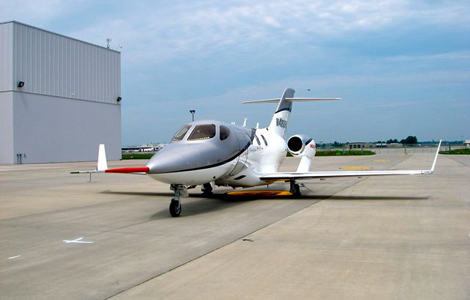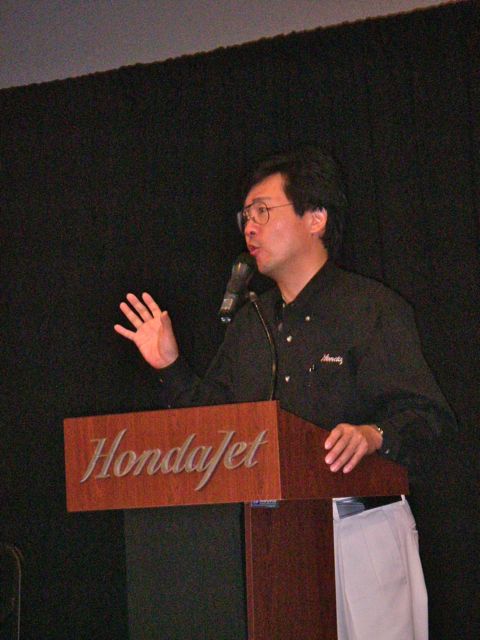The Eye of the Beholder
For its innovation and emphasis on inner beauty, the Hondajet deserves a recent design award
Airplanes that look beautiful from the outside only reward their owners as they’re strolling up to board it. But time spent inside the cabin lasts far longer, and leaves a more indelible impression.
With that bit of wisdom in mind, the HA-420 Hondajet has been designed not to showcase a sleek exterior, but to afford the most spacious cabin possible in a light business jet. Now the American Institute of Aeronautics and Astronautics has named Hondajet designer Michimasa Fujino as the winner of its 2012 Aircraft Design Award.
The first unique feature that smacks the new Hondajet owner in the eye is the engine location: It’s mounted on struts that extend from the upper surface of the wing – the very place where, as Fujino likes to recall, he was taught in engineering school you never place the engines.
The next eye-grabber is the forward fuselage and nose section, which bulge like a swollen gland. They’re configured that way to encourage smoother airflow and reduce drag, despite the off-putting squid-like appearance.
Once inside, the benefit of the engine location becomes apparent in the startling spaciousness of the cabin, which extends farther aft than it does in traditional twinjets, where the engines are mounted behind the fuselage. There’s also room for a huge baggage compartment. By mounting the engines on the wing, all the plumbing that usually fills the aft fuselage moves elsewhere, freeing up space.
Fujino-san, as he’s known to his employees at the company’s Greensboro, North Carolina headquarters, deserves the award for supreme patience and persistence, if nothing else. But then, Honda has always been a patient and persistent company. And it’s said that founder Soichiro Honda had always been interested in aircraft.
The little jet began as a design study in the 1980s, then as a flying proof of concept aircraft – the MH02 – built under the aegis of Mississippi State University’s aeronautics division. The prototype for the HA-420 first flew in December 2003, nearly 10 years ago. And it’s been Fujino’s baby from day one.
Some would argue that it’s strange to give the award to an airplane design that has yet to prove commercially successful. The Hondajet has so far sold only about 100 orders (Honda is vague on the numbers). Not to mention that the airplane has yet to receive its FAA certificate of airworthiness. When the Eclipse Very Light Jet won the Collier Trophy back in 2005, there was a muffled outcry from its competitors because its status in the market was ambiguous, and the company went under soon afterward (it has since been revived).
But the Honda situation is different. The company speaks in terms of transportation, not vehicles. It is focused on movement, not machines. Its laboratories are as likely to experiment with four-legged robot walking machines and the locomotion of insects as it is with engine emissions – an area which it happens to have pioneered. The company even launched its own small jet engine, the HF120, which has led to a partnership with General Electric’s aero engine division.
Fujino deserves this award for pursuing successfully the engine-over-wing configuration that has proven itself in testing. After all, the 420 in the aircraft’s designation is derived from its top speed in knots. That’s 483 mph, fastest in its class.
So congratulations to the man who inspired a new airplane, a new way to mount the engines on light twinjets, and a company – one with staying power – that’s brand new to aviation.

